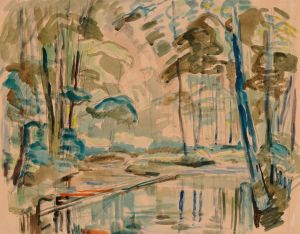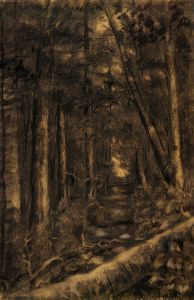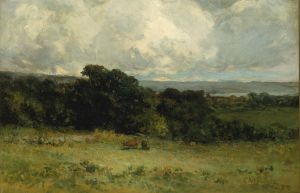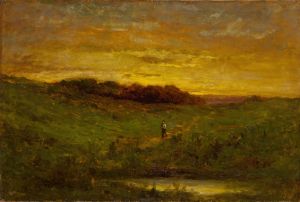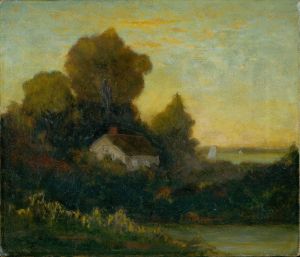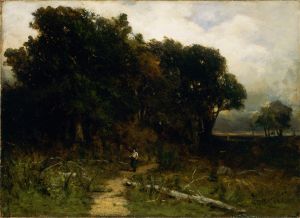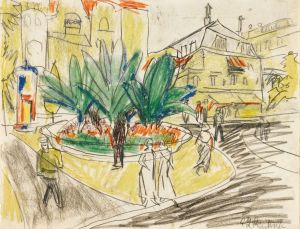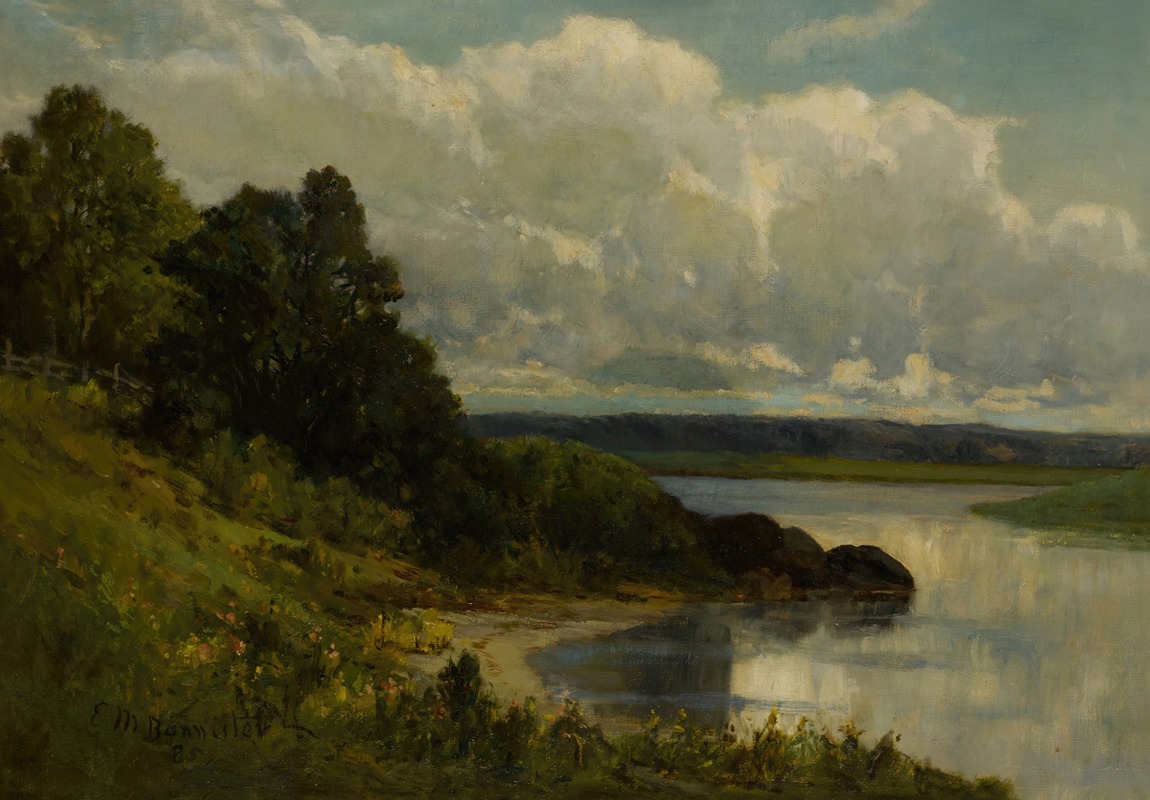
The Palmer River
A hand-painted replica of Edward Mitchell Bannister’s masterpiece The Palmer River, meticulously crafted by professional artists to capture the true essence of the original. Each piece is created with museum-quality canvas and rare mineral pigments, carefully painted by experienced artists with delicate brushstrokes and rich, layered colors to perfectly recreate the texture of the original artwork. Unlike machine-printed reproductions, this hand-painted version brings the painting to life, infused with the artist’s emotions and skill in every stroke. Whether for personal collection or home decoration, it instantly elevates the artistic atmosphere of any space.
Edward Mitchell Bannister was a prominent African American artist known for his contributions to the American art scene in the 19th century. Born in 1828 in St. Andrews, New Brunswick, Canada, Bannister moved to the United States, where he became an influential figure in the art community, particularly in New England. He was a self-taught artist who overcame significant racial barriers to achieve recognition for his work.
"The Palmer River" is one of Bannister's notable paintings, although specific details about this particular work are limited. Bannister's oeuvre is characterized by his dedication to landscape painting, often depicting serene and idyllic scenes of nature. His style is associated with the Barbizon school, which emphasized naturalism and the beauty of the natural world. Bannister's landscapes are known for their atmospheric quality, subtle use of color, and attention to light and shadow.
Bannister's work gained significant attention after he won a bronze medal at the 1876 Philadelphia Centennial Exposition for his painting "Under the Oaks." This achievement was particularly noteworthy given the racial prejudices of the time, as Bannister was one of the few African American artists to receive such recognition. His success at the exposition helped to elevate his status in the art community and provided him with greater opportunities to exhibit his work.
Throughout his career, Bannister was deeply involved in the art community in Providence, Rhode Island, where he settled with his wife, Christiana Carteaux Bannister, a successful businesswoman and abolitionist. He was a founding member of the Providence Art Club, one of the oldest art clubs in the United States, which played a crucial role in fostering a supportive environment for artists in the region.
Bannister's paintings often reflect his appreciation for the tranquility and beauty of the natural world, and "The Palmer River" is likely no exception. While specific information about this painting is scarce, it can be inferred that it embodies Bannister's characteristic style and thematic focus. His work is celebrated for its ability to convey a sense of peace and harmony, inviting viewers to contemplate the serene landscapes he so skillfully rendered.
Edward Mitchell Bannister's legacy as an artist is significant not only for his artistic achievements but also for his role in challenging the racial barriers of his time. His dedication to his craft and his success in the face of adversity continue to inspire future generations of artists. Bannister's contributions to American art are recognized and appreciated for their historical and cultural significance, and his works remain an important part of the American art historical canon.






